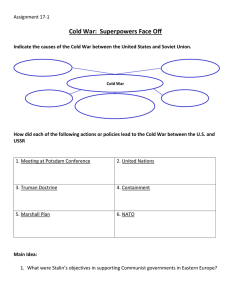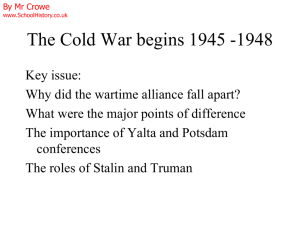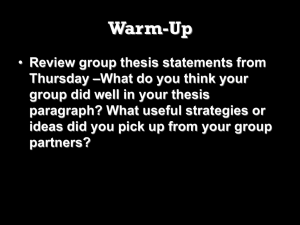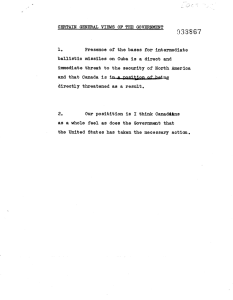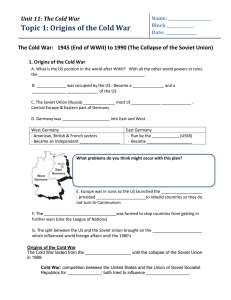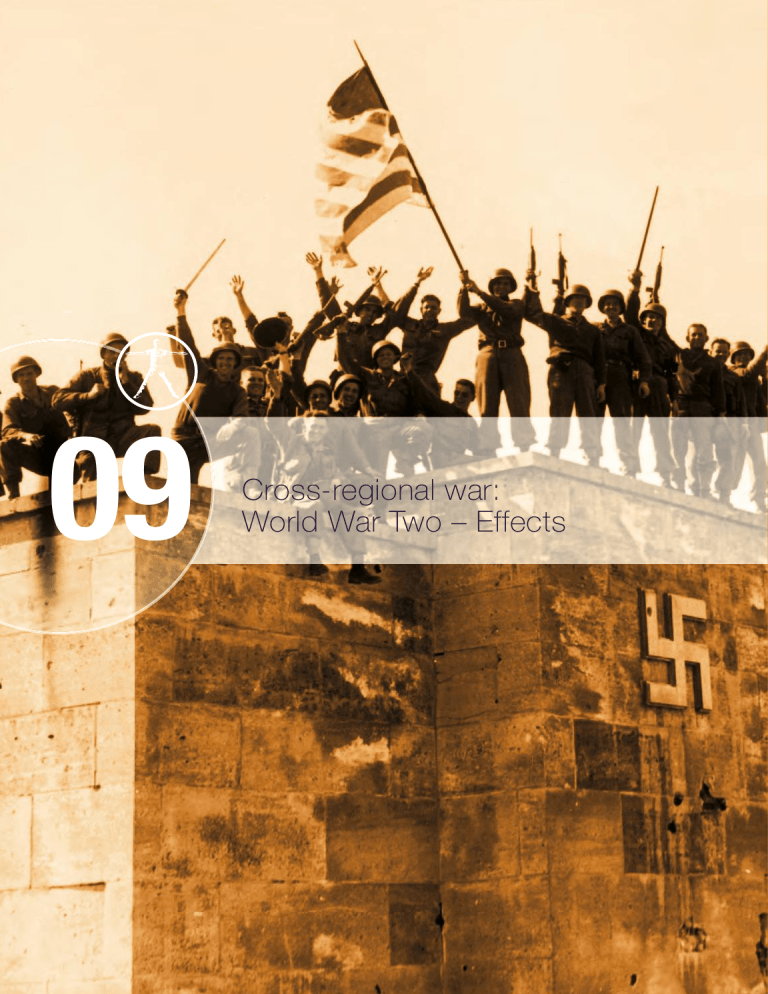
09 Cross-regional war: World War Two – Effects Key concepts: Consequence As you read this chapter, consider the following essay questions: Men of the 45th Division of the US 7th Army celebrate VE Day in Nuremberg after capturing the city. • Discuss the international impact of one 20th-century war. • Examine the political and economic effects of one 20th-century war. The impact of the war in Europe Human cost No other war has recorded such a loss of life in so short a time. Some estimates put the number of dead at more than 50 million, with nearly 40 million of these in Europe. As you have read in the section on total war in the previous chapter, the impact on civilians in this war was huge. Perhaps as many as two-thirds of the war dead were civilians, the most extreme example of this situation being Poland, which lost a fifth of its population, almost all of the victims civilians. In fact, in Europe, only Germany and the UK suffered military losses significantly greater than civilian losses. America’s casualties, meanwhile, were almost exclusively military. British Empire Mobilized Military killed Civilians killed (thousands) (thousands) (thousands) 8,720 452 80 China 8,000 1,500 7,800 France 6,000 250 360 11,000 3,250 700 Germany Italy 4,500 330 500 Japan 6,095 1,700 360 Poland USA 1,000 120 5,300 14,900 407 Small number USSR 12,500 9,500 21,500 (est.) Total from above countries 72,715 17,509 36,600 Military and civilian death toll in World War Two. The horror for civilians did not end with the conclusion of hostilities. More than 20 million people had been displaced during the course of the war, not just as a result of the fighting, but also due to the actions of different countries in expelling and deporting whole groups of people. Stalin and Hitler alone were responsible for the forced removals of some 30 million people. In addition, many people were forced to move from their homes once the war was over. In German-speaking areas in Hungary, Romania, and Poland, Germans were driven from their homes and forced to move to Germany. This also happened in German lands taken at the end of the war by Russia and Poland. In all, between 1945 and 1947, approximately 16 million Germans were expelled from the countries of Central and Eastern Europe, and many died as a result of this flight to Western Europe. Thus, although the war was over, the suffering continued for many. Economic cost World War Two was also much more devastating economically than World War One. Unlike in World War One, the fighting in World War Two took place over nearly all of Europe. Aerial bombing was particularly destructive. Very few cities of any size were 199 09 World War Two: Effects left unscathed, and the result was millions of dead and homeless people. In addition, transport and communications had been seriously disrupted, industry destroyed, and farmland ruined. The consequence of this was that Europe was prostrate in 1945, with the ‘victors’ of the war (apart from the USA) emerging from the conflict almost as devastated as the losers. Food production had fallen to half pre-war production levels and 150 million people were dependent on some sort of relief food distribution during 1945–1946. Britain was bankrupted by the war, and the Soviet economy suffered badly, with much of western Russia devastated and 25 million homeless. Political consequences At the conclusion of the First World War it was borders that were invented and adjusted, while people were on the whole left in place. After 1945 what happened was rather the opposite: with one major exception boundaries stayed broadly intact and people were moved instead. Tony Judt, Postwar (Vintage, 2010), p.27. Compared with the peace settlement at Versailles, boundary changes after World War Two were relatively slight, with the exception of Poland, which saw its border being shifted westwards – it lost 179,000 square kilometres of land in the east and gained 104,000 square kilometres from German territories. The new boundaries for Poland were decided at the Yalta Conference. There was no major treaty drawn up at the end of World War Two as there had been at Versailles in 1919, but the Allied leaders met twice in 1945 to make decisions about post-war Europe, first at Yalta in February, and then at Potsdam in July. Significantly, no treaty was signed concerning the future of Germany itself. Although it was agreed at the Yalta Conference in 1945 that Germany should be temporarily divided into four occupation zones, growing hostility between the Western Allies and the Soviet Union led to a permanent division of Germany by 1949. In addition, in all the countries that the Red Army had liberated – Poland, Hungary, Bulgaria, and later Czechoslovakia – one-party regimes under Stalin’s control had emerged by 1948, despite an agreement at Yalta that free elections would be allowed in all Eastern European states. To USSR from Poland BALTIC SEA To Poland from Germany USSR Map showing the new borders of Poland after World War Two. Curzon Line GERMANY Oder-Neisse Line Warsaw POLAND CZECHOSLOVAKIA 200 Key Territorial changes USSR Activity 1 ATL Thinking skills 1. Why was no peace treaty officially drawn up with Germany at the end of World War Two? The effects of the war on international relations The USA and USSR emerge as superpowers The most significant post-war development in international relations was the change in the balance of power. With some exceptions, such as Austria, the major powers before and after World War One were more or less the same. After World War Two, however, the situation changed radically. American politician Dean Acheson wrote of the post-World War Two situation: ‘The whole world structure and order that we had inherited from the 19th century was gone.’ The USSR and the USA emerged from World War Two significantly more powerful than they had been before the war, while the ‘old powers’ of Britain and France emerged significantly weaker. Why was this? Military reasons ● ● ● ● To defeat Germany, the USA had acquired the largest air force in the world, with almost 73,000 aircraft. By 1945, it also had 12 million men in the armed forces and more than 70,000 naval vessels. In addition, it possessed the atomic bomb. To defeat Germany, the USSR had acquired the largest land army in the world. France and Britain’s inability to defeat Germany had changed the balance of power. They had become ‘second-rank’ powers. Without the USA and the USSR, there was no way that Britain could have defeated Germany on its own. The USSR now lacked any strong military neighbours. This made it a regional power. Economic reasons ● ● ● ● The USA’s economy was strengthened by the war. It was able to out-produce all the other powers put together. The USA was committed to more ‘open’ trade; its politicians and businessmen wanted to ensure liberal trade conditions and market competition prevailed. The USA was willing to play an active role in preventing the pre-war pattern of tradeblocs and tariffs from re-emerging. The USA now took the lead in international collaboration through the International Monetary Fund (IMF) and General Agreement on Tariffs and Trade (GATT). The USA had the economic strength to prevent a return to instability in Europe. The small Eastern European countries that had been created by the Treaty of Versailles were not economically viable on their own; they needed the support of a stronger neighbour, and the USSR could replace Germany in this role. Political reasons ● ● For the West, the ideals of democracy and international collaboration had triumphed over Fascism. Thus liberal democracy was seen as the right path for the future. For the USSR, it was Communism that had triumphed over Fascism, and the Communist Party was given a new lease of life. Indeed, Communism had widespread respect in Europe because of its part in resisting the Germans. Many of the earliest resistance movements in occupied Europe had been dominated by the Communists, and immediately after the war there were strong Communist parties in several 201 09 World War Two: Effects ● ● Western European states. Also, in Asia, Communism filled the power vacuum left by the collapse of colonial empires. The USSR’s huge losses and the role of the Red Army in defeating the Nazis gave Stalin a claim to a large role in forming the post-war world. The USSR had the political (as well as military) strength to prevent a return to instability in Eastern Europe. Communism could fill the political vacuum there. Activity 2 ATL Thinking skills Source analysis While the war’s immeasurable costs and the destruction were not limited to Europe, it is clear in retrospect that it marked the end of the Continent’s global ascendency. The demise of European dominance was a gradual process that began before 1914 and ended after 1945, yet only the bloodletting of two massive wars ensured the transfer of power away from Europe to the United States and the Soviet Union and to the near collapse of the European empires. Europe would never again be the centre of world politics, nor could it ever again claim the superior moral position that had buttressed its prestige in so many non-European regions. Zara Steiner, The Triumph of the Dark (OUP, 2013), pp.1066–1067. 1. According to Steiner, what was the impact of World War Two on Europe? The impact of the superpowers CHALLENGE YOURSELF ATL Thinking and research skills What actually is the definition of a ‘superpower’? Who first used the term ‘superpowers’ and when? How far did the superpowers differ from the ‘Great Powers’ of pre-World War Two Europe? Given the new position of the USA and the USSR in 1945, and their relative strength compared to the weakened European countries, it is not surprising that they were to become the key players in setting up the post-war settlement of Europe. After 1945, at least until 1949, Europe continued to be at the heart of international relations, but now as the battleground between the USSR and the USA, as the two superpowers came into direct conflict over how the post-war settlement should be carried out. This tension developed into what became known as the ‘Cold War’. The map of Europe after 1945 was determined by this growing conflict between the USSR and the USA, with a clear divide between Eastern and Western Europe. For the USA, this situation meant an end to isolationism and the beginning of a dominant role in world affairs. The Cold War began where it had left off in 1941, with profound distrust of Soviet motives, and an ideological divide every bit as deep as that between liberalism and Nazism. Only two years after the end of the war the American Air Policy Commission reported to Truman that the essential ‘incompatibility of East and West’ called for the build-up of a ‘devastating’ force of bombers and missiles equipped with nuclear weapons capable of operation at a range of 5,000 miles. American strategists moved effortlessly from one Manichaean world to the next. Richard Overy, Why the Allies Won, 2nd ed. (Pimlico, 2006), p.404. Western Europe One aspect of the developing Cold War was the intervention of the USA and the USSR in the economic recovery of Europe. With Western Europe’s economic weakness translating into political weakness, the USA was forced to step in to provide economic aid. This took the form of the Marshall Plan in 1948; the USA was spurred into action to do this in order to prevent the weakened governments of France and Italy falling to Communism. Thanks partly to the Marshall Plan, Western countries were able to implement necessary social changes and recover economically. In fact, in the 1950s and the 1960s, Western European countries enjoyed two decades of sustained economic growth. 202 With the elimination of Fascism, Western Europe also saw the establishment of multiparty democracies, led for the most part by elder statesmen who had entered politics many decades before. Tony Judt explains this phenomenon: The vogue between the wars had been for the new and the modern. Parliaments and democracies were seen by many – and not just Fascists and Communists – as decadent, stagnant, corrupt and in any case inadequate to the tasks of the modern state. War and occupation dispelled these illusions, for voters if not for intellectuals. In the cold light of peace, the dull compromises of constitutional democracy took on a new appeal. What most people longed for in 1945 was social progress and renewal, to be sure, combined with the reassurance of stable and familiar political forms. Where the First World War had a politically radicalising effect, its successor produced the opposite outcome; a deep longing for normality. Statesmen whose experience reached back beyond the troubled inter-war decades to the more settled and self-confident era before 1914 thus had a particular attraction … Whatever their party ‘label’, the elder statesmen of Europe were all, by 1945, sceptical, pragmatic practitioners of the art of the possible. Tony Judt, Postwar (Vintage, 2010), p.82. Activity 3 ATL Thinking skills Source analysis 1. How does Judt account for the political developments that took place in Europe after 1945? 2. According to Judt, what difference was there between the impact of World War One and World War Two on political developments? Why do you think that there was this difference? The ‘social progress’ that Judt mentions above took the form of new social legislation that revolutionized the role of the modern state and the expectations upon it. Every European country set up provision for a wide range of social services post-1945, though perhaps it was in Britain that the change in the role of the state was most marked. The election of 1945 swept out Churchill and the Conservative Party and returned the Labour Party, led by Clement Attlee, to office. This British government went on to establish the Welfare State, with care for the individual ‘from the cradle to the grave’. The Marshall Plan The Marshall Plan was an American economic aid programme for Europe. It was a response to the economic devastation of Europe after the war and the fact that the USA was aware that, without economic recovery, there was a danger that Communist parties, already strong in France and Italy, would gain increasing support in Europe. The USSR refused to take part in the Plan, claiming that it was an attempt by the Americans to exercise ‘dollar diplomacy’ over Europe, thus establishing American economic domination. This helped to lead to the economic division of Europe as the USSR set up Comecon. With Western and Eastern Europe divided economically, the traditional exchange between East and West was disrupted. On the other hand, the devastation of war and the Communist threat led to a greater measure of economic cooperation in Western Europe than ever before, with the formation of the European Coal and Steel Community and ultimately the European Economic Community (EEC) in the 1950s. What was the impact of the war on the position of women? As you read in the previous section, during the war, women took on jobs – from crane driving to factory work – that were normally the male domain. They also played a key role in resistance movements in occupied countries – and in the USSR women took on combat roles at the front. However, after the war there were strong pressures in all countries for women to return to the roles that they had had before the war. Although they did for the most part return to their more traditional roles, the taste of work and freedom that women had experienced played a part in contributing, in the West, to the fight for more equal rights, in terms of pay and job opportunities, that took place in the 1960s. CHALLENGE YOURSELF Research skills ATL Continue with your research on the impact of war on women. As you did with World War One, research the position of women in different countries following World War Two. What factors, other than the impact of World War Two, caused the women’s movement of the 1960s? Eastern Europe Between 1944 and 1948, Stalin established control over Hungary, Czechoslovakia, East Germany, Bulgaria, Romania, and Poland. This involved: 203 09 If you reflect on the ‘results’ of World War Two discussed here, it is clear that a historian needs to be able to understand something of each of the other Areas of Knowledge to be able to understand historical cause and effect. It is also important to realize that each of the other Areas of Knowledge has its own ‘history’. Is this true of any other Areas of Knowledge? Cominform Cominform was founded by Stalin in 1947 in order to direct Communist party activity throughout Europe. It was the successor to Comintern (Communist International), which had been set up in 1919. World War Two: Effects ●● ●● ●● In addition, the USSR sought to integrate its economy with those of Eastern Europe to offset the weakness of industry and agriculture in the USSR. It established the Council for Mutual Economic Assistance (Comecon). Comecon was not a massive aid programme like the Marshall Plan, but more one of economic exploitation. Each satellite state had to produce what the USSR needed: for example, Poland produced coal. The satellite states were not to cooperate economically with each other, however. This situation was one of exploitation for the satellite states, and economic modernization proceeded at a much slower rate. There was not, therefore, the economic regeneration that Western Europe experienced. With no Marshall Plan, and with the priority of the USSR on heavy industry and the building of nuclear weapons, the citizens of both the Soviet Union and the satellite states suffered economic hardship in the next few decades. This economic and political system was backed up by: ●● ●● ●● ●● ●● Compare and contrast the impacts of World War One and World War Two on Europe. the establishment of one-party rule, including installation of national leaders dependent on the USSR nationalization of private enterprise establishment of Soviet-style five-year plans – heavy industry was encouraged and agriculture collectivized. social and ideological controls, such as Cominform, secret police censorship of all media suppression of religious freedom military presence of Soviet troops political purges. Conclusions on the effect of the war in Europe By 1949, a remarkable symmetry had emerged in Europe, with the political, economic, and military division of the continent. The Western bloc, under the domination of the USA, had a common political philosophy – democracy – and the commitment of the USA, through the ‘Truman Doctrine’, to its defence. The Western states were tied to the USA and to each other economically, via Marshall Aid and the EEC, and by 1949 had a military alliance in the North Atlantic Treaty Organization (NATO). Similarly, the Soviet Bloc comprised Communist states, members of a joint ideological organization called the Communist Information Bureau (Cominform). They supposedly had an organization for economic cooperation in Comecon and were ‘protected’ by Soviet forces (the Warsaw Pact, a Communist version of NATO, was established in 1955). Activity 4 ATL Thinking skills Review questions 1. What was the effect of the war on the following: a) the international status of Britain and France b) the international status of the USA and USSR? 2. Why did distrust start to develop between the USA and the USSR after 1945? 3. What impact did these changes have on international relations? 4. What were the key economic effects of the war? How did the economic situation of Europe change between 1945 and 1950? 5. What political, economic, and social differences developed between Western European countries and Eastern European countries? 204
